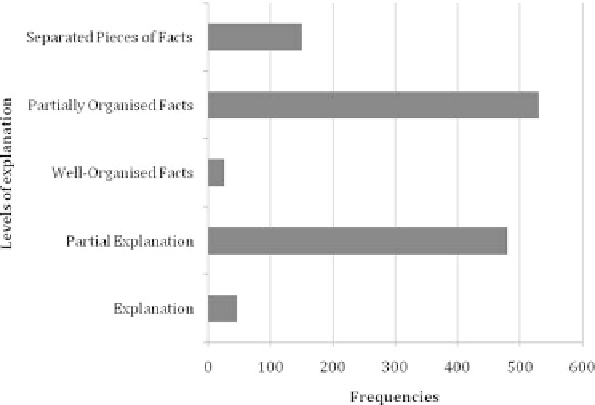Information Technology Reference
In-Depth Information
Fig. 24.7
Distribution of the explanation levels across discourse moves
2
0.000)
across discourse moves. Given this result and looking at Fig. 24.7, one may interpret
that as discourse moves on, more partial and complete explanations are present and
well-organized facts diminish.
The level of explanation varies significantly (
χ
=
160.604, d.f.
=
8,
p
=
Discussion, Pedagogical Implications, and Future Steps
Teachers were the ones who wrote up the first question regarding climate change,
with or without preliminary discussion with students. Contrary to the basic IRE/F
classroom discourse structure identified in the late seventies, questions kept being
asked throughout discourse sequences, and it is clearly demonstrated that students
asked FI questions in their third move and beyond. This is substantive evidence
that what Cazden saw as the potential of technology being realized (2001): class-
room online discourse using Knowledge Forum, inspired by a knowledge-building
pedagogy, modifies the basic discourse structure of the classroom.
IRFI is therefore suggested as the structure of progressive online discourse pro-
vided it is guided by a pedagogy that emphasizes authentic questioning and values
collaborative inquiry within and between classrooms with the support of a powerful
electronic forum (e.g., Knowledge Forum).
Some of the students' short-answer questions followed teachers long-answer
questions. It was as if teachers' questions prompted students to ask specific ques-
tions. We do not know yet how the combination of long-answer and short-answer
questions can be articulated for progressive online discourse. More investigation is
needed regarding questions most likely to engage students in an inquiry process.
Our analysis benefited from the works of Hamel (2007), Hakkarainen (2003), Lee

